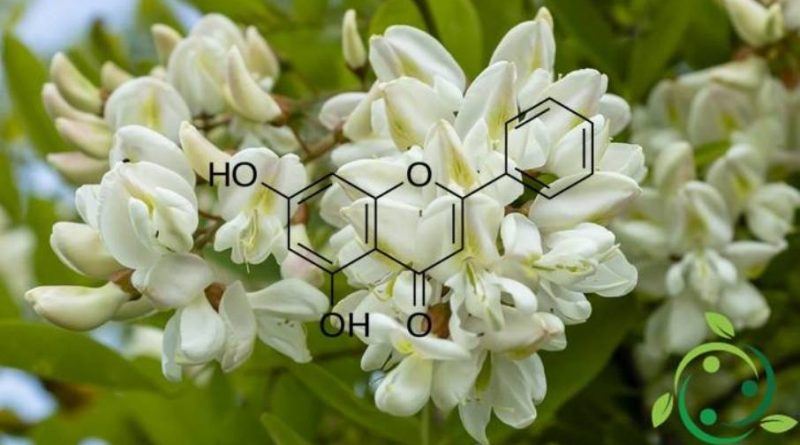Chrysin
Chrysin
Chrysin whose term in the official IUPAC nomenclature is. 5,7-dihydroxy-2-phenyl-4H-cromen-4-one and whose brute or molecular formula is: C15H10O4 is a flavonoid, originally isolated from the passion flower.
Chrysin is present in Robinia pseudoacacia L. and constitutes 50% of secondary metabolites present in acacia honey.
From the in vitro experimentation it has been shown that chrysin is a powerful inhibitor of the aromatase enzyme, able to modulate the GABAA and GABAC receptors, inhibitor of the growth of various types of malignant tumors through the action on key proteins and enzymes of the cellular life (MAPk p38, ERK 1/2, Bax and Caspasi).
In this sense, chrysin was found to be the most effective of all the flavonoids tested, and has an effect equal in power to the drug without many of the side effects.
Chrysin also has an antioxidant power comparable to that of vitamins, and is an anti-inflammatory (which acts on the Cox-2 pathway).
Despite these premises, again following studies conducted in vivo, the oral administration of chrysin would not have shown any clinical activity of aromatase inhibition.
To summarize then, chrysin is one of the most powerful natural aromatase inhibitors, without presenting many of the side effects typical of this type of drugs: in addition, it has anti-inflammatory and antioxidant properties, which makes the products based on this flavonoid suitable for treatment or as an adjunct to drugs for HIV or AIDS, gout, erectile dysfunction and some types of tumors, including breast cancer.
Chrysin is particularly used in sports integration, as it prevents androgens from becoming estrogen, a process that often happens if some anabolics are taken to improve sports performance and that involves side effects such as gynecomastia and water retention: moreover, according to some , chrysin would help testosterone secretion, although there is no scientific evidence about it.
Warning: The information given is not medical advice and may not be accurate. The contents are for illustrative purposes only and do not replace medical advice.

